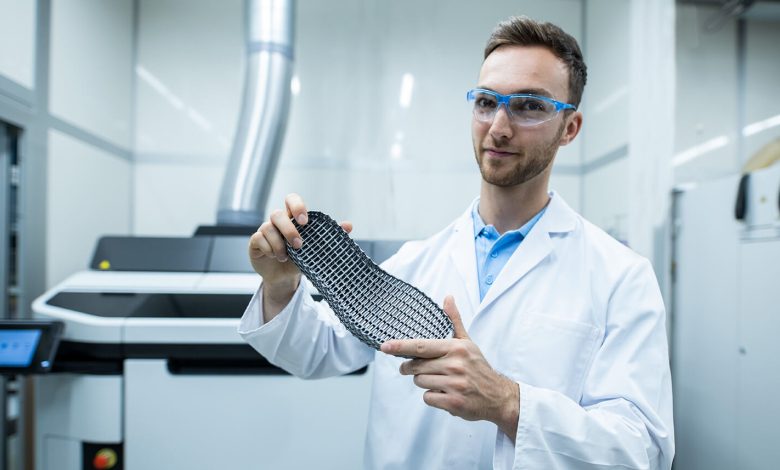5 Amazing Applications of Chemical Post-Processing Technology in Surface Treatment

Surface treatment is an integral part of modern manufacturing and engineering, from automotive to aerospace, as it helps to improve the performance, appearance, and durability of materials. Chemical post-processing is one of the most popular methods of surface treatment, with its use resulting in many incredible outcomes. In this blog post, we will explore excellent applications of chemical post-processing in surface treatment and how they can enhance the properties of various materials.
1. 3D Photoetching
3D photo etching is a post-processing method of 3D printing to produce intricate surface structures. It works by using a photoresist, a light-sensitive material, to create intricate patterns on the surface of the printed object. The chemical milling 3d printing post processing method produces finer details and allows for complex geometry, such as internal cavities or slanted walls.
Photoetching can create microfeatures with high accuracy and can also be used to remove material from the printed object to increase strength or reduce weight. That finds applications in additive manufacturing (AM) where more traditional processes are unsuitable. You can quickly and accurately enhance printed parts’ surfaces and features with chemical post-processing techniques like photo etching.
2. Removing Burrs
Deburring is a post-processing step involving removing sharp or jagged edges from a surface. The process helps create smoother surfaces and can be helpful for various applications. For example, deburring helps prevent potential safety hazards or unwanted contact with rough surfaces. It also improves the overall aesthetic of a product by making the edges look more uniform.
Deburring is often helpful in the manufacturing and construction industries. Such as machining, grinding, and laser cutting processes. An appropriate deburring solution helps break down the burrs and smooth the surface. Deburring can help reduce production costs by improving the quality of parts and eliminating the need for manual reworking. Additionally, it increases the overall efficiency of the production process by decreasing the time it takes to complete a job.
3. It Helps in Surface Preparation for Penetration Inspection
Surface preparation for penetration inspection is essential in any surface treatment process. Chemical post-processing helps ensure that the surface is adequately ready for inspection and that the results are accurate. The process involves removing contaminants or deposits from the material’s surface that could interfere with the test. That can include oil, grease, or dirt, which can all inhibit the penetration of an inspection probe.
Chemical post-processing techniques such as pickling, passivation, etching, and cleaning can help prepare a surface for penetration inspection. Whether it’s a dipping test, hardness testing, or microstructure analysis – chemical post-processing plays an integral role in ensuring the accuracy of the results.
4. Long-Term Fatigue Improvement
Chemical post-processing can help in improving the long-term fatigue of surfaces. It’s a process that helps improve the performance of components and machines by reducing the stress level on the surface, thus decreasing the amount of wear and tear over time. This improved performance can result in increased efficiency, reduced downtime and maintenance costs, and improved overall reliability.
The process works by manipulating the composition and structure of the material at a microscopic level. Changing the material’s properties on the surface can help strengthen and harden against wear and tear. That helps increase its durability and reduce the chances of it suffering damage by forces such as friction, shock, and vibration. As a result, components are more resistant to cracking and breaking under repeated force, leading to improved fatigue performance over a more extended period.
5. Removing Sub-Surface Defects and Improving Aesthetics
Chemical post-processing can help to remove sub-surface defects and improve aesthetics. By removing material layer-by-layer, this process helps to create a smoother, more aesthetically pleasing surface. In some cases, post-processing can even help to repair damage or wear and tear to the object’s surface. That’s because it allows for greater control when removing material than traditional machining techniques.
Post-processing can also help create a uniform finish, allowing for easier cleaning, painting, or other treatments. In addition, it can remove blemishes and imperfections that are invisible to the naked eye. Overall, this process is an excellent way to improve the overall appearance of any object without compromising its structural integrity.
Conclusion
Chemical post-processing is an integral part of the surface treatment process. It helps to improve the surface quality and performance of a wide range of components, from medical devices to aerospace parts. Pickling, passivation, etching, deburring, and cleaning can remove sub-surface defects, improve long-term fatigue and enhance aesthetics. As such, chemical post-processing has become an essential step in many modern manufacturing processes. With its ability to deliver high-quality results with consistent precision and reliability, chemical post-processing will remain an integral part of the surface treatment process for years to come. However, working with a reliable and experienced chemical milling company with high-tech capabilities is crucial.





